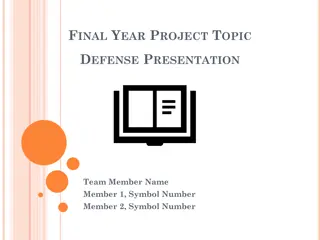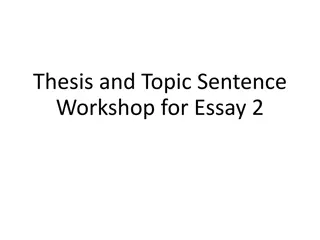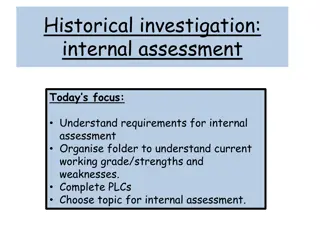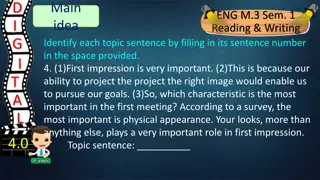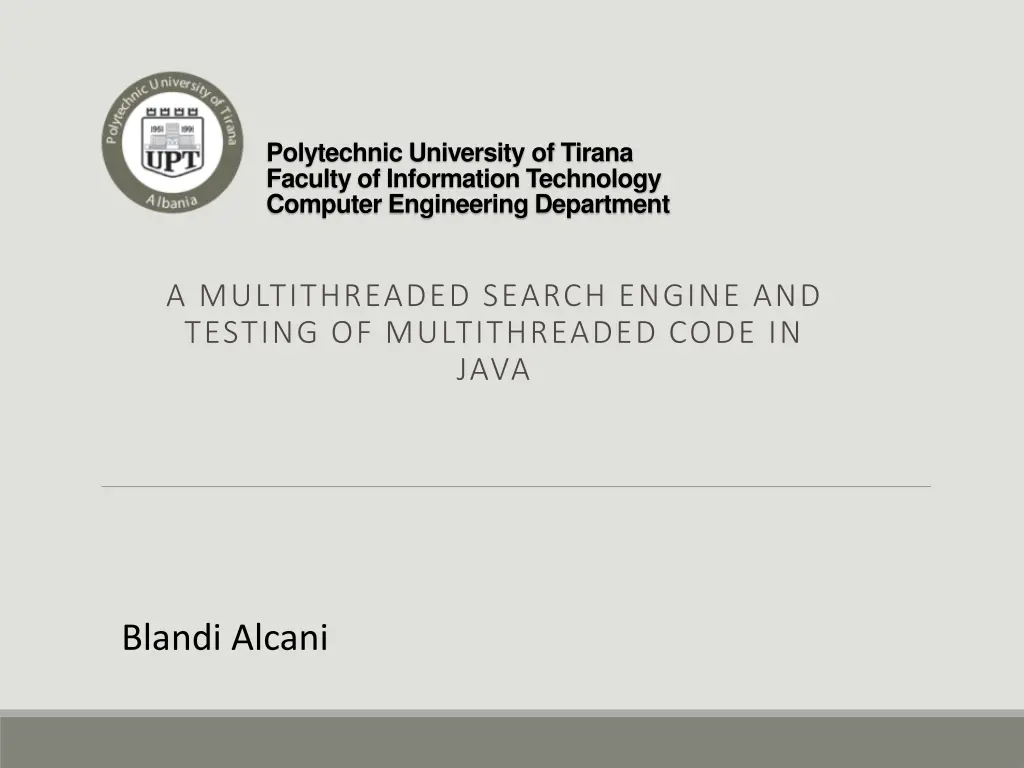
Multithreaded Search Engine Project at Polytechnic University of Tirana
"Explore the development of a multithreaded search engine project at Polytechnic University of Tirana, focusing on specifications, design, multithreading in Java, data structures, implementation, and testing in a Java environment."
Download Presentation

Please find below an Image/Link to download the presentation.
The content on the website is provided AS IS for your information and personal use only. It may not be sold, licensed, or shared on other websites without obtaining consent from the author. If you encounter any issues during the download, it is possible that the publisher has removed the file from their server.
You are allowed to download the files provided on this website for personal or commercial use, subject to the condition that they are used lawfully. All files are the property of their respective owners.
The content on the website is provided AS IS for your information and personal use only. It may not be sold, licensed, or shared on other websites without obtaining consent from the author.
E N D
Presentation Transcript
Polytechnic University of Tirana Faculty of Information Technology Computer Engineering Department A MULTITHREADED SEARCH ENGINE AND TESTING OF MULTITHREADED CODE IN JAVA Blandi Alcani
Overview of the presentation 1. Specifications 2. Design 1. 2. 3. Multithreading in Java Concurrent Data Structures in Java Text Extracting Libraries 3. Implementation and screenshots 4. Testing of the Multithreaded environment in Java 2
1. Specifications Index text documents located in the hard drive or the local network. Should be able to index files of different types including Microsoft Word, PDF, plain text, rich text format etc. The index is to be held in a data structure with a high performance such as a hash table. The indexing of the files should be made in a multithreaded environment. 3
2.1 Multithreading in Java an overview A thread in Java is an object that implements the Runnable interface. Runnable defines the method run() where the code of the thread is written. A thread class can be created by extending the Thread class, which implements the Runnable interface and can invoke a thread by using Thread.start() 4
2.1 Management of threads in Java Starting a thread manually can be difficult. For each thread => Thread Object => Too much overhead. An Executor object can start many threads. An ExecutorService object can terminate many threads. Thread Pools offer recycling of thread objects, thus avoiding thread creation overhead. 5
2.2 Data structures in Java Collections Framework Container of Objects. Easy data manipulation (search, insert, delete) Can be used with iterator objects. Two main divisions: Collections and Maps Key => Value Words in a document => Document name/location, line etc. Concurrent Maps Multithreading support 6
2.2 ConcurrentHashMap It is thread safe without synchronizing the whole map. Reads can happen very fast while write is done with a lock. The locking is at a much finer granularity at a hashmap bucket level. ConcurrentHashMap uses multitude of locks. 7
2.3 Text Extracting Libraries Apache Open Source Libraries Implemented in 100% Java, good performance. PDFBox Apache Library for PDF documents manipulation and extraction of text. Apache POI - Apache Library for Microsoft documents manipulation and extraction of text. 9
3. Implementation and Screenshots User friendly, simple menu based GUI Separation of user interface and functionality. Searching with binary operands Index class is serializable, object => file and vice-versa. 3 classes Index entry class Index class User interface class 10
3. Implementation and Screenshots 11
4. Testing in the multithreaded environment Testing multithreaded code can be difficult and challenging: Concurrency introduces non-determinism Multiple executions of the same test may have different interleaving (different execution order for threads) Bugs are very hard to reproduce and debug 3 main approaches to test multithreaded code: JUnit, thread management left to the application. JUnit, thread management done from JUnit. Third party libraries for JUnit, specialized in concurrent code testing. 12
4. Testing in the multithreaded environment JUnit, thread management left to the application. Pros: No modification of the original software needed. Cons: Less control of thread management. Least effective. No significant multithread related bugs are caught. 13
4. Testing in the multithreaded environment JUnit, thread management done from JUnit. Pros: More control of thread management more scenarios covered, more bugs detected. Cons: Requires modification of original application before and after the tests. 14
4. Testing in the multithreaded environment Third party libraries for Junit, specialized in concurrent code testing. For example: ConTest by IBM, jMock, GroboUtils etc. Pros: Cause synchronization problems to more likely surface in testing Support the traditional test coverage models (e.g. branch coverage and method coverage) as well as advanced synchronization coverage models Support partial replay, increasing likelihood that a program scenario which gave rise to a specific synchronization problem will recur Produces a lot of useful debugging information More bugs detected Best option Cons: Learn the API Usually requires licence 15
Thank you! References D. Liang, Introduction to Java Programming (2010) B. Goetz, Java Concurrency in Practice (2006) Apache POI project, poi.apache.org ConTest Project, https://www.research.ibm.com/haifa/projects/verification/contest/ 16



